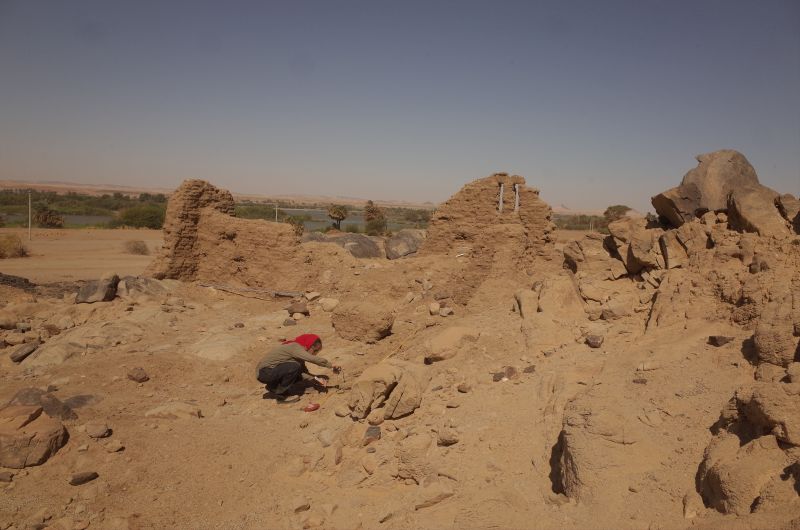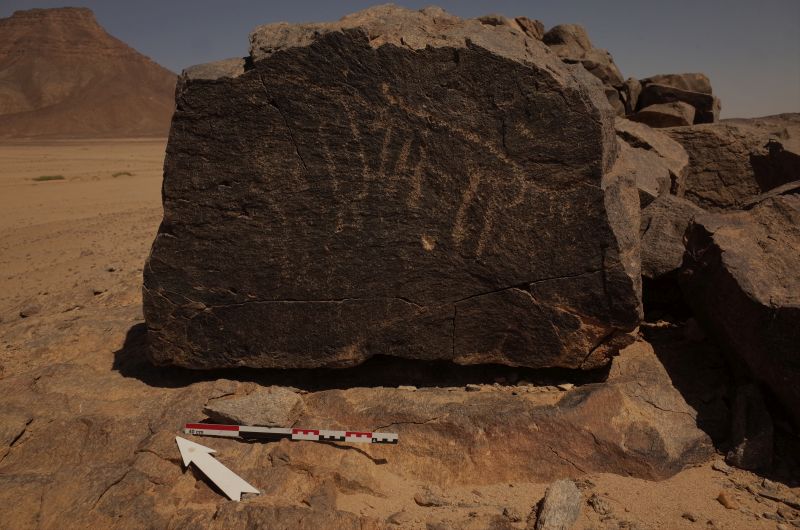Ferka is the district marking the northern end of MUAFS concession – the area is famous for monumental Post-Meroitic tumuli already excavated by Lawrence Kirwan and a large quantity of Medieval sites, including among other the small mud-brick church 3-G-9.

The elite tombs at Ferka, 3-G-1, are simply stunning – some of them have a height of more than 12m and clearly bear some resemblances to the famous tombs at Qustul and Ballana (see Kirwan 1939).

Rock art is another category that is well attested in Ferka East, most of which seems Medieval in date.

We documented most of Vila’s sites in the area in the last two days; some are still not found and seem to have gone due to modern house building, road construction work and gold digging.Thus, this compares to what we discovered in Ginis, Kosha and Mograkka. But as I have already noted in 2019, the site distribution in Ferka is very specific and is dominated by remains from late epochs, contrasting with other districts of the MUAFS concession.
Apart from the numerous sites dating to the 1st millennium AD, two large Kerma cemeteries, both located in the area of the large wadi, Wadi Sibée, are notable as earlier evidence. One of them comprises c. 20 tombs, the other one up to 40 tombs. We still found Kerma Classique ceramics associated with both cemeteries. This suggests a late date within the Kerma period fo these burial grounds. It is still an open question where contemporaneous camp sites or villages are located – the majority of domestic Kerma sites is situated in Ginis and Kosha, thus further upstream. These are important questions we will address within the framework of the ERC project DiverseNile which will soon be launched in Munich.
We will finish our 2020 survey in the next days, working a bit more in Mograkka and Kosha. Since Friday, we are fighting with very long power breaks and lacking phone connection and almost no internet access – no ideal parameters towards the end of a season, but we just need to stay patient. Electricity was at least working for a few hours over night, allowing recharging our equipment. So all set for another full day of archaeology tomorrow!
P.S.: and since this blog post did not go live yesterday as planned, it is actually already tomorrow and we will soon start another day!
Reference
Kirwan 1939 = Kirwan, L. P. 1939. The Oxford University Excavations at Firka. London.
